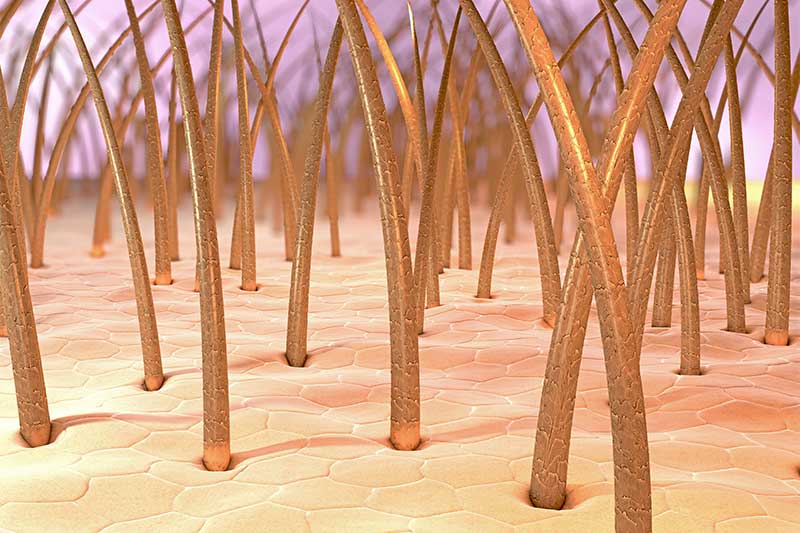When hair is transferred from one area of the scalp to another via an FUE hair transplant, hair shedding does occur. But it is not a concern, rather it is a normal part of the hair transplant process. Let’s look at the natural growth stages of hair then what happens after a hair transplant.
The healthy hair growth cycle
Hair grows in staggered cycles and hair follicles will be in one of these three natural growth stages at any given time.
Anagen phase - This is the active phase of the hair cycle characterised by growth. In this phase, your hair grows approximately 1.25 cm per 28 days. The duration of this stage averages 2-7 years. Your maximum hair length is determined through many factors including genetics, health, diet, and age.
Catagen phase - The catagen phase is a transitional stage that lasts approximately 10 days. Your hair's growth slows as the hair detaches from its blood supply.
Telogen stage - In the telogen phase of the hair cycle, the hair sheds and the follicle becomes dormant for 1-4 months, before new hair strands begin to emerge from the hair follicle.
And the growth cycle starts all over again.
Losing hair due to Male Pattern Hair Loss
For men who are genetically predisposed to hair loss, a hormone called DHT (dihydrotestosterone) attacks the follicles located in certain areas of the scalp. This is usually the temples, frontal hairline, and the top and vertex of the scalp, but the back and sides are usually not affected. The follicles are gradually destroyed by this hormone, causing the hair in the next cycle to grow thinner and finer, and eventually not at all.
Hair shedding after a transplant
After a follicular unit extraction (FUE) hair transplantation, hair shedding is an expected stage of the healing and regrowth process. Hair transplant shedding occurs 6-9 weeks after the procedure. This stage, which is often known as ‘shock hair loss’, resembles the catagen step of the hair growth process. The new hair will enter the resting phase and allow the transplanted hair follicles to produce new growth. Hair falling out during this stage does not represent transplant failure, your new hair follicles remain intact and ready to sprout. Approximately 3 months following this loss, the telogen phase of hair regrowth begins.
Continuing hair loss due to MPHL
Transplanted hair from the back of the head does not succumb to pattern hair loss, as it is not susceptible to DHT (the hormone that causes male pattern hair loss). However, hair transplantation is unable to prevent the loss of existing hair, which is susceptible but has not yet fallen out of the top of the head.
The transplantation process, which uses the invulnerable donor grafts from the back and sides of the head, makes the hair resistant to fall-out, irrespective of the area it is transplanted to. However, the existing hair may still fall out, and subsequent surgeries may be desired to minimise the look of balding that often occur on the mid-central, crown, and front areas of the head.
Key takeaways
- The normal hair growth cycle occurs in three phases, anagen, catagen, and telogen phases. These essentially represent growth (anagen), slowed growth and detachment from blood supply (catagen), and hair fall and dormancy (telogen) before the whole cycle repeats.
- The hair loss that occurs because of genetic male pattern hair loss happens because of a hormone that attacks and destroys susceptible follicles.
- Transplanted hair from the back of the scalp is not vulnerable to MPHL.
- Hair transplantation does not prevent hair that is susceptible to MPHL from falling out. And for this reason, some men opt for multiple hair transplants as their hair loss continues.
- If you’d like to know more about hair transplants, please book an appointment with our hair transplant surgeon.







